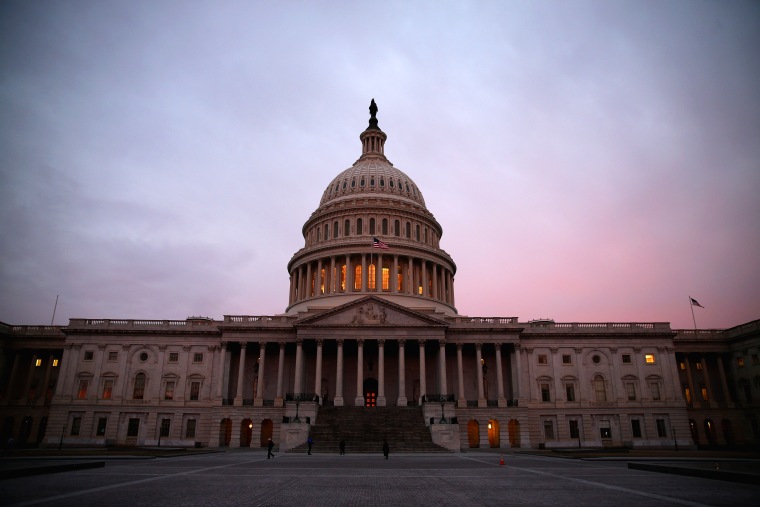In his first State of the Union address, President Obama stood before an increasingly recalcitrant Congress and declared that “we face more than a deficit of dollars right now. We face a deficit of trust.” The same could be said in a little over 24 hour’s time when Obama delivers his sixth State of the Union to a packed House chamber -- only this time, with more Republican lawmakers.
If partisan dysfunction was a problem then, when Democrats controlled both the House and Senate, this newly sworn in GOP-controlled Congress doesn’t bode well for many of the agenda items in Obama’s address. In fact, political analysts see his policy proposals -- which include paid sick leave and free community college for qualified students -- as more of a wish-list for the next Democratic nominee to take on, not a doable agenda for this political environment.
Sixty-four percent of Americans believe the country is on the wrong track, a December NBC News/Wall Street Journal poll found, and less than half approve of Obama’s job. When Obama took office a year before that first State of the Union address, those numbers were far better for the president. While 59% believed the country was on the wrong track, a massive 71% approved of the job Obama was doing.
Clearly, that “deficit of trust” Obama spoke of in 2010 is still very much alive and well. But other numbers show that the state of the union is nevertheless getting stronger.
Take the actual deficit, for example. When Obama first took office in 2009, the federal budget deficit stood at a staggering $1.4 trillion. Today, it’s considerably smaller at $506 billion. The unemployment rate has also seen steady improvement. In 2009, it was at 7.8%. Today -- 5.6 percent.
NBC News’ Mark Murray compiled a list of information by which to compare the state of our union when Obama first took office, and the state of our union heading into his presidency’s fourth quarter. Take a look and decide for yourself what track the country’s on:
Unemployment rate
THEN: 7.8%
NOW: 5.6%
Dow Jones Average
THEN: 7,949
NOW: 17,512 (as of 1/16/15)
Consumer Confidence
THEN: 37.4
NOW: 92.6
Gross Domestic Product
THEN: -5.3%
NOW: +5.0%
Median household income (adjusted for inflation)
THEN: $54,059
NOW: $51,939
Federal budget deficit
THEN: -$1.4 trillion
NOW: -$506 billion
Federal public debt
THEN: $10.6 trillion
NOW: $17.3 trillion
Percentage of Americans approving of Obama’s job
THEN: 71%
NOW: 45% (Dec. 2014 NBC/WSJ poll)
Percentage of Americans believing country is on the wrong track
THEN: 59%
NOW: 64% (Dec. 2014 NBC/WSJ poll)
Number of Democrats in U.S. House of Representatives
THEN: 257
NOW: 188
Number of Democrats (plus independents caucusing with Democrats) in U.S. Senate
THEN: 58
NOW: 46
Number of U.S. troops in Iraq
THEN: 139,500
NOW: 2,222
Number of U.S. troops in Afghanistan
THEN: 34,400
NOW: 10,800
Note: THEN represents the best-available figure as Obama was first taking office; NOW represents the most recent statistic.
SOURCES: Bureau of Labor Statistics, Conference Board, Commerce Dept., Census Bureau, Congressional Budget Office, Treasury Dept., NBC/WSJ poll, NBC reporting.
